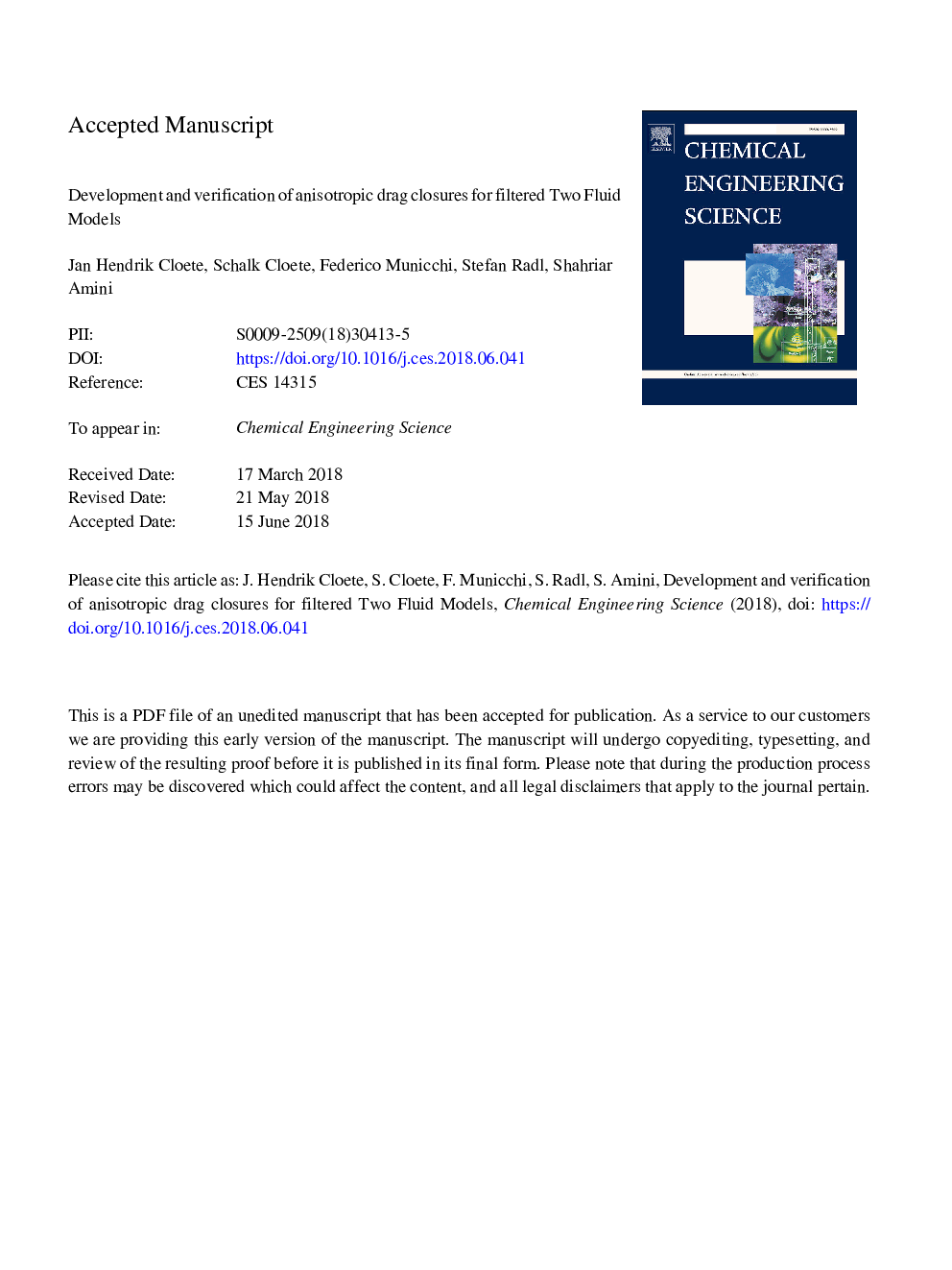| Article ID | Journal | Published Year | Pages | File Type |
|---|---|---|---|---|
| 11000249 | Chemical Engineering Science | 2018 | 47 Pages |
Abstract
Over the past decade, filtered Two Fluid Models (fTFMs) have emerged as a promising approach for enabling fluidized bed simulations at industrially relevant scales. In these models, the filtered drag force is considered to be the most important quantity that requires closure. To date, such closures have typically relied on an isotropic interphase momentum exchange coefficient by applying a drag correction factor to the microscopic drag closures commonly used in resolved simulations. In the present study, both isotropic and anisotropic closures are developed for predicting the filtered interphase forces. The relative performance of these two approaches is then evaluated by means of an a priori assessment, considering data obtained from simulations in which all flow variables are resolved, which were also used for closure derivation. Also, an a posteriori assessment, which compares coarse grid simulation results to a benchmark resolved simulation of a bubbling fluidized bed, is presented. The primary conclusion from the present study is that it is essential to account for the anisotropy of the filtered momentum exchange coefficient. It is shown that this can be done by employing a drift velocity formulation of the filtered drag force and by considering a gravitational contribution that only acts in the vertical direction. Furthermore, it is found that for the large computational grid sizes that are typically required in industrial scale fluidized bed simulations, a closure for the meso-scale interphase force is essential. Finally, also for coarse grids, a non-linearity correction factor, which accounts for assumptions in deriving the drift velocity-based form of the filtered drag force, requires closure. The present study therefore highlights multiple avenues for improving drag closures used in fTFMs. Hence, these results may critically strengthen the predictive capabilities of fTFMs, as well as guide future modelling efforts.
Keywords
Related Topics
Physical Sciences and Engineering
Chemical Engineering
Chemical Engineering (General)
Authors
Jan Hendrik Cloete, Schalk Cloete, Federico Municchi, Stefan Radl, Shahriar Amini,
